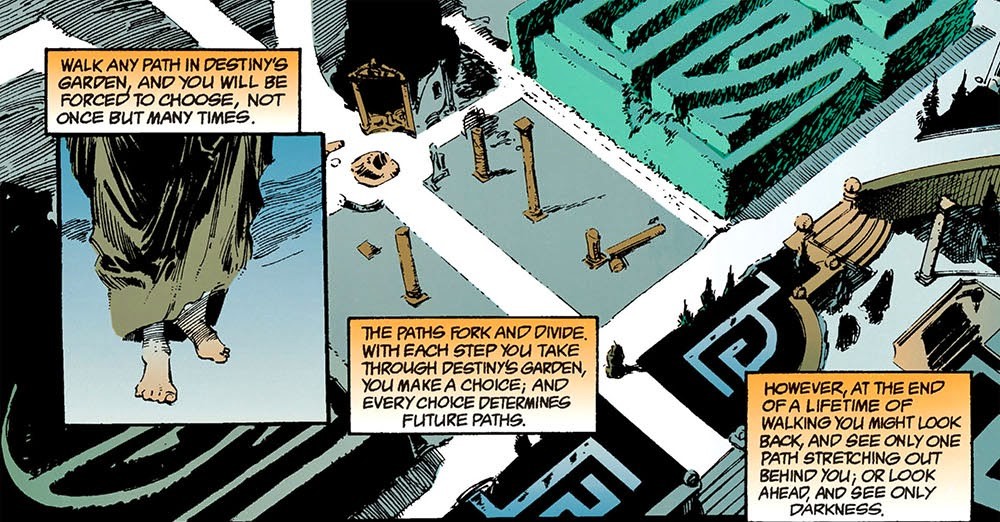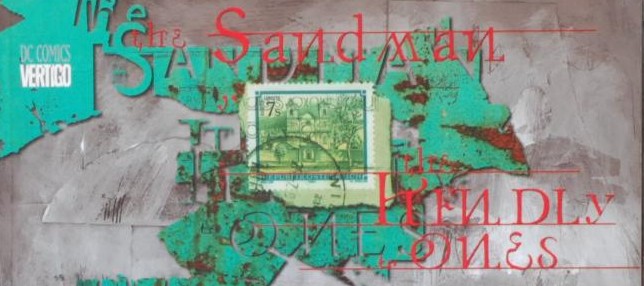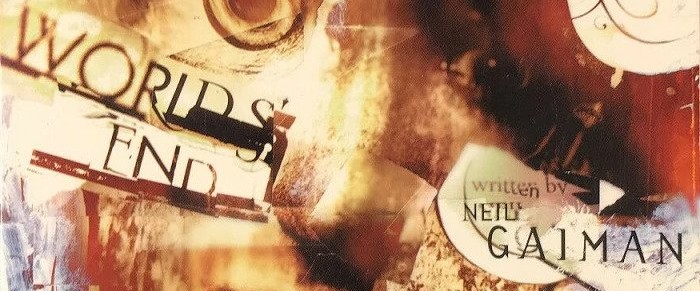
As the final volume of The Sandman, The Wake is a quiet and somber ending, but not without hope. With Michael Zulli’s intricate art and Daniel Vozzo’s painterly colors, it’s a strong contrast to the bold imagery of The Kindly Ones. The Wake doesn’t really need to do that much — it mostly feels and operates like an epilogue — but it provides Neil Gaiman with the opportunity he needed to close out the story of this incarnation of Dream and look to the next one.
The first three issues are about Dream’s funeral and it is mostly characters sharing their memories of him. We also check back in with a few of the characters — not just Rose and Lyta, but also Rick Madoc and Hob Gadling. There is something comforting about seeing all these characters for the last time and that’s mostly the point. The action is over and now it is just time for reflection.
These issues are wordy and it is, as I’ve said, a lot of people standing around and talking. Generally, I do not like wordy comics because it’s missing the point of what makes comics great. But it does help slow these issues down and causes me to linger over both what is being said and the images themselves. It’s beautiful. I know I went on a journey rereading The Sandman this time and it felt good to have a sense of closure and that I, like the characters, also got to mourn and celebrate the end of this comic. It felt good to share in the sentimental nature of this comic.
It’s a fun idea to have Dream’s exes (well, Titania refuses to say either way) all exchanging their takes on him at his funeral, but I also feel like it reduces them to only being defined by their relationship to him, even if they are getting the last word.
And in case you weren’t paying attention, we have Lucien summarizing the thesis statement of The Sandman for us here:

I am slightly making fun, but I do really like this panel and how neatly it provides a thesis statement for all the comic’s run.
Matthew’s speech a Dream’s funeral always gets me. I have said that I didn’t love “The Sound of Her Wings” as much as most people did because it didn’t really reflect my experiences with death. Matthew, though, so simply expresses the complicated feelings that can come up when someone dies.
Amusingly, several characters from DC Comics proper appear, like Batman and Darkseid. I always found that amusing because as much as The Sandman did distance itself from its early origins as being very much based in the DC Universe, it’s a fun reminder of just how big a world and how many stories comics can tell.
The “epilogue” issue, featuring Hob and his girlfriend, Gwen, in the United States at a renaissance fair. Hob has a chat with Death, considers the centuries of his life, and decides to keep living. Unlike Dream, Hob always kept letting himself change and so he still wants to live.
I appreciate that Gwen, who is Black, doesn’t end up dead in a fire (and instead, just alive and caught in a rain storm), and it’s a good course correction overall. The nature of serial works is that creators can’t go back and change the choices they already made.
I like Jon J. Muth’s art but “Exiles” always felt a bit like filler to me. It basically just re-emphasizes the idea of how change is necessary for life. It’s a fine enough issue but I think I would’ve preferred if the same general story had appeared somewhere earlier in the run of The Sandman.
The final issue of The Sandman is “The Tempest,” which checks back in with William Shakespeare, toward the end of his career, writing his second play for Dream. Charles Vess (with assistance on pencils and layouts from Bryan Talbot, John Ridgway and Zulli) returns to conclude the story started in “A Midsummer Night’s Dream” and the symmetry is lovely.
Should you read this as self-indulgent on Gaiman’s part? Maybe. I don’t think he’s completely comparing himself to Shakespeare, but here are two writers looking back at their major accomplishments at this point in their careers. It’s not that I hate, of course, and I think after 75 issues and nearly 10 years of The Sandman, Gaiman is more than allowed to be self-congratulatory.
“The Tempest” is about what would expect, but that’s not a complaint. It’s exactly what I want it to be. Yes, I slightly roll my eyes at Dream telling Shakespeare “I am the Prince of Stories, Will; but I have no story of my own. Nor shall I ever” because, you know, I just read 75 issues of his story. But at the same time, I get Gaiman’s point. The Sandman was never actually about Dream. He may have been at the center of the comic, but it was about everything that happened around him. It’s a fitting ending to an often complicated, often messy and often beautiful comic series.




